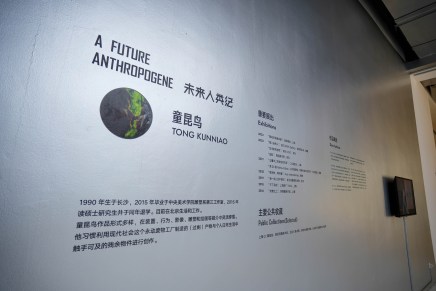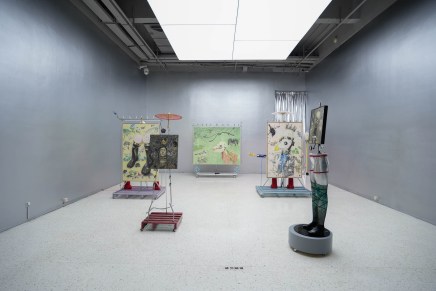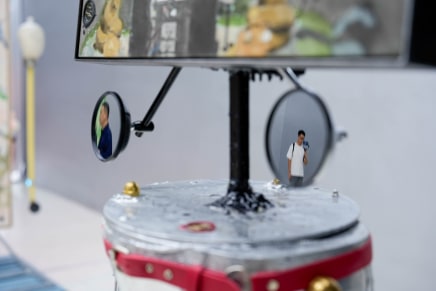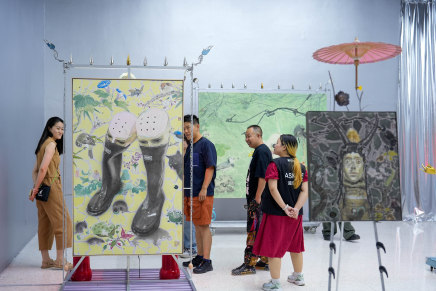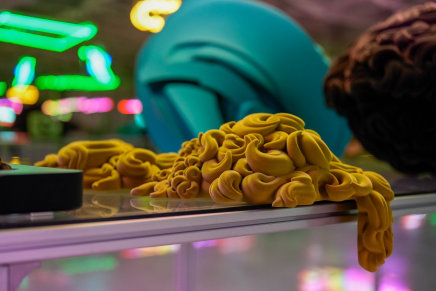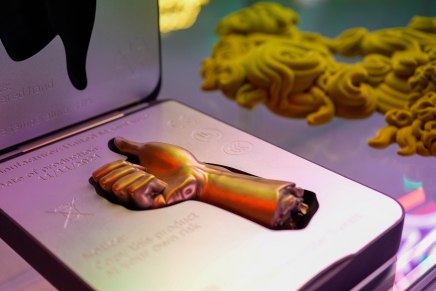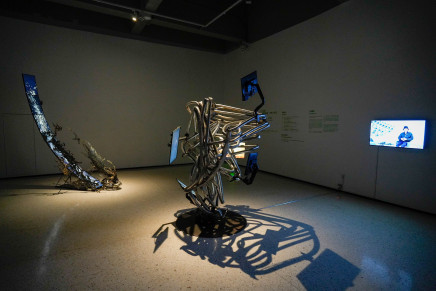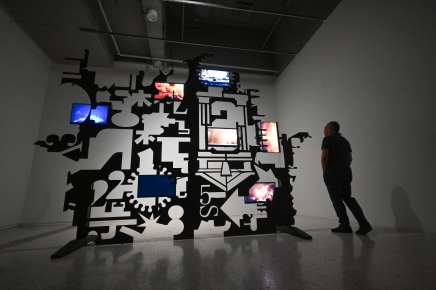Liu zhan
Liu Zhan placed a selection of his artworks created in the past ten years, allowing for the quality of a chaotic street stall. Having intended to display parallel rows of artworks characterizing cultural productions of various kinds, the artist aims to encourage viewers’ sense of impulse buying. Liu Zhan intends to remain critical of consumerism by turning abandoned items other than manufactured goods into abstract items using new materials in a new artistic language.
“Illuminate” is a description of class, labor, and the body. Liu Zhan repeatedly and constantly polished the surface of the collected scrap metal to bring about a mirror-like effect to reflect the world. The only light source throughout the grinding process came from the sparks that splashed about, through which labor and dedication were reflected in the metal mirror. Mechanical labor, deafening noise, the smell of sweat and rust, and the brilliant sparks brought together such a poetic scene. In the process of recording, the sparks seemed to be reborn and have been transformed into rays of light that can illuminate the world. The body is the capital for revolution and also the consumables for capital. The pyres built as ramparts seem to be ignited by the roaring rotation of the machine, making their choice in the middle of tiredness and determinedness but effortlessly indicating a sense of heartache. In the second space, the labor of the worker’s body turns into the firelight, illuminating the artworks on display and the audience in the gallery.
tong kunniao
At one point, romanticism in European art turned towards multi-layered heterogeneity of location, ethnicity, and religion to open up other opportunities for the ever- increasingly closed system. Similarly, the revival of ancient traditions and the quest for the lost rituals in the wilderness undergone by ancient China opened the pathway to transformation and change. The radicalism of today has carried all kinds of de-centering, deontological beliefs and thoughts to extremes in both subject matter and form. Here we come to see that Tong Kunniao’s artistic practice, in terms of subject matter, has conceptualized the broad equality of human, nature, and machine; in terms of form, the artist has developed a deontological, even de-mechanical type of artistic practice. Such a disruptive strategy appears to remind us of Futurism and Dadaism which were popular one hundred years ago or so, making us wonder if a new nihilistic avant-garde movement can ever happen again.
A Future Anthropogene
Curated by He Guiyan
Chongqing Times Art Museum
2024.08.17 - 11.24
